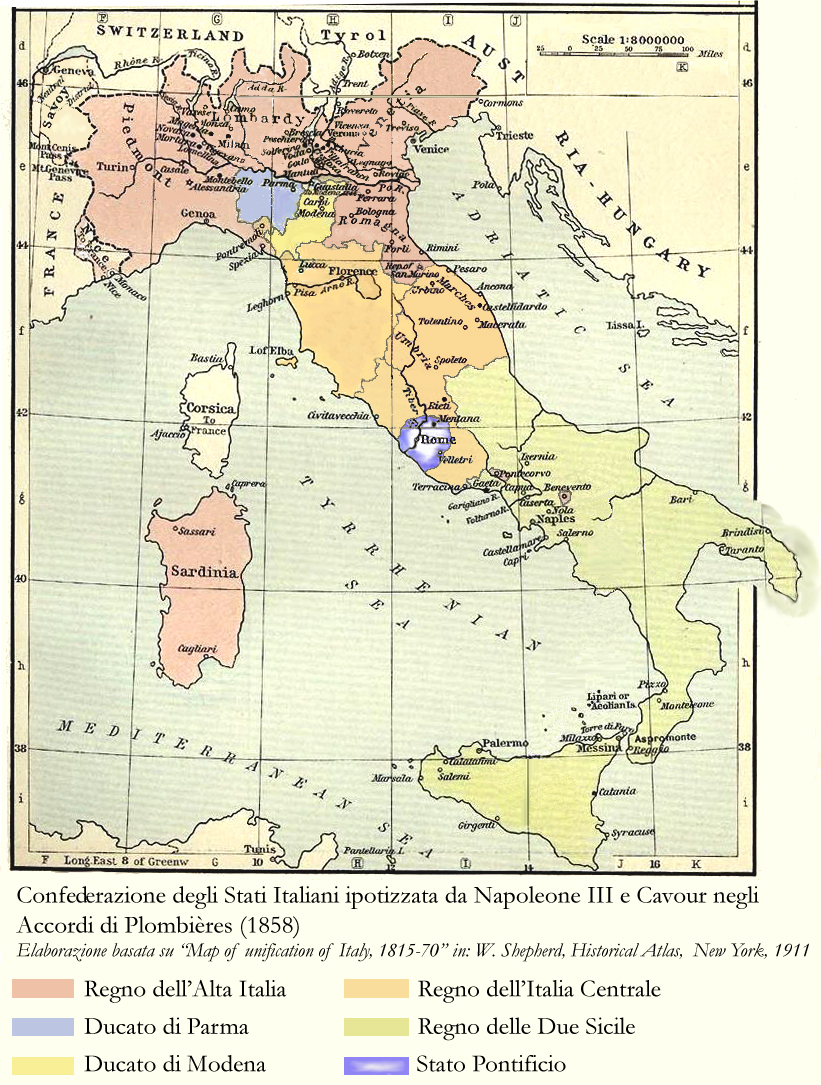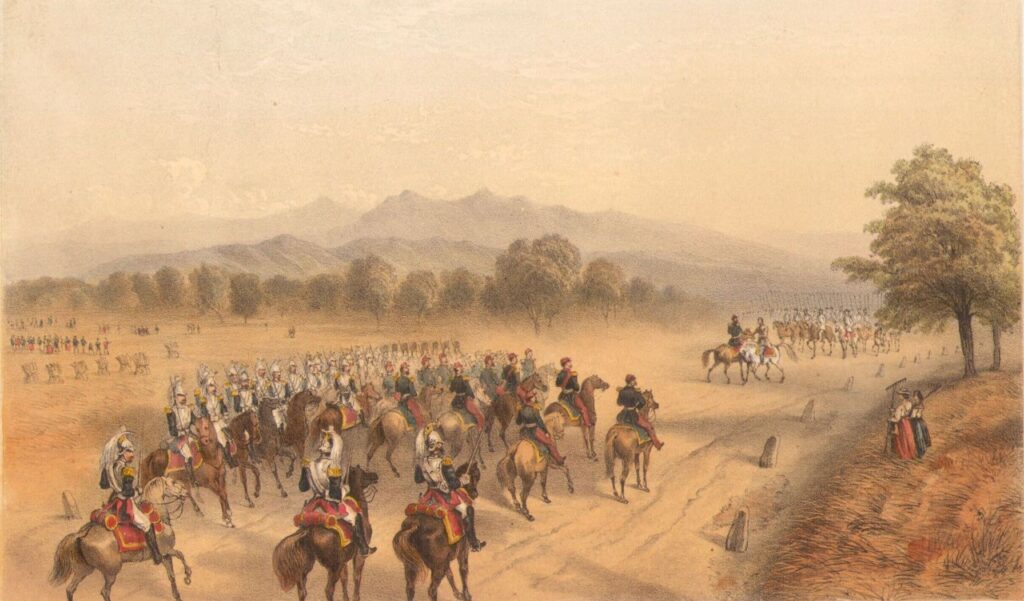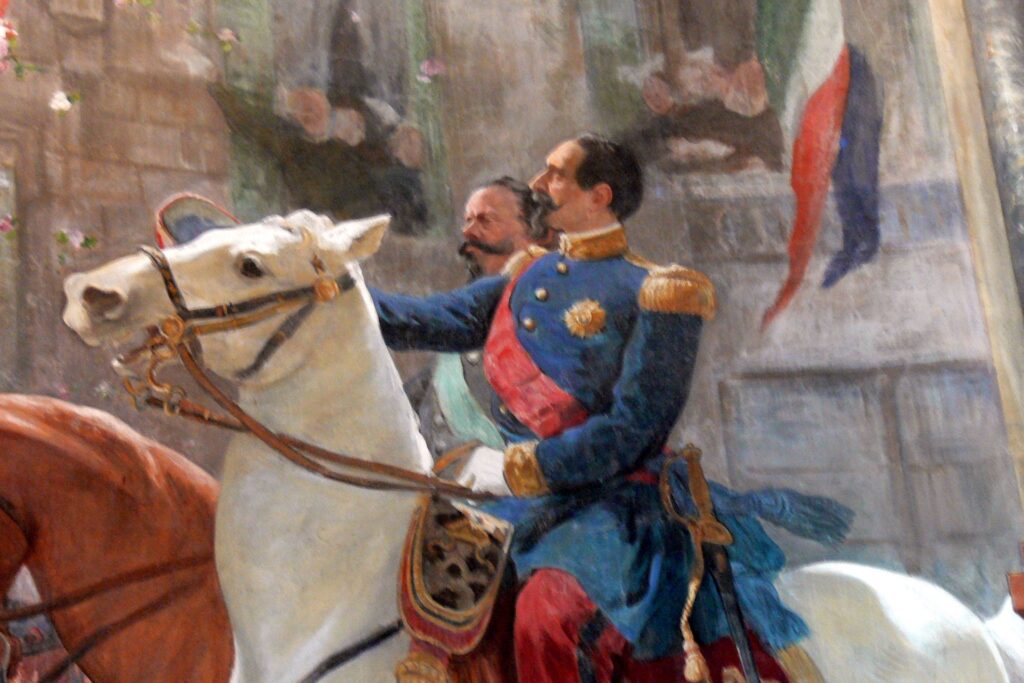One hundred and sixty years of Italy, not even one of federalism …
On March 17, 1861, Metternich’s “geographic expression” was transformed into a unitary state, removing the confederal idea that Cattaneo and Manzoni had cherished
During that complex historical period that is, somewhat improperly, defined as “Risorgimento”, numerous prophecies about Italian national unity were expressed by illustrious cultural figures.
In reality, it would probably be more appropriate to speak of “Risorgimenti”, given the plurality and diversity of geopolitical visions that characterized this historical phenomenon.
It goes without saying that, in today’s reading of the unification process, the Manzonian prophecy prevails.
That Italian Confederation born and buried in Zurich
The protagonists of the Peace of Zurich of November 10, 1859
The Treaty of Zurich between Austria and France of November 10, 1859
The Europe of small states and a barely sketched out federalism….
This, on the other hand, also happens in the linguistic direction, since the Siena congress of scientists in 1862, which marked the definitive sunset of the municipal linguistic vision, also very much in vogue in the first half of the 19th century.
Therefore, the structure of the Italy to come was predicted by the Lombard writer in “Marzo 1821” and was, from the beginning, so to speak, Savoy. The beginning of the unitary process should have been Piedmontese, as in fact happened, even if perhaps not exactly in the terms desired by Manzoni.

Carlo Alberto was king, but of three kingdoms federated together
Charles Albert, at that time simple heir to the throne, should have become the leader of an Italian confederation, based on the well-known theory of the three kingdoms, and lead a progressive expulsion of the Hapsburgs from the center-north. In this, in the plans of the various sectarian leaders, it should have been helped by the other Italian dynasties, Neapolitans in head.
Even Manzoni, therefore, that is what, then, became, voluntarily or not, one of the symbols of Savoy centralism, in 1821, despite appearances, could not have imagined Italy other than a federation of principalities.
The withdrawal of the DDL “Autonomy” disrespect to Italy that works
Italy, requested “certain times for differentiated regionalism”
Italy: “On the diversified autonomy, the Government is ready”
On the other hand, there were too many clamorous differences between the various pre-unification states not to think in this way, and the chain of events that led to that fateful March 17, 1861, was then completely unthinkable.
Certainly, Manzoni proclaimed his desire for a single Italy… “of arms, language, altar, memories, blood and heart”. But this was obviously a literary and dreamlike vision, since the pre-unification states were very different in terms of military usage, language, religious manifestations, tradition and history, lineage and even sentiments.
The “forgotten” pragmatism of Carlo Cattaneo
The vision of Carlo Cattaneo, the forgotten great of our Risorgimento, condemned to oblivion by the inconvenience of his ideas on the federal destiny of Italy, was much more realistic. The Milanese intellectual had a very noble sense of his country, but he was also an intellectual with his feet on the ground: something so rare at our latitudes.
But, coming to the present day, what has changed and what, vice versa, remains current, of those ideas and those different versions regarding our national unity? We could say that that oneiric factor, which we have mentioned, definitely survives the wear and tear of time: after all, the image of the national community that is perpetuated is still that of Manzoni. With the necessary adjustments.

An unbridgeable anthropological distance between North and South?
And yet, not even today do those parameters seem realistic: there are still enormous differences of a cultural, traditional and, one might say, anthropological nature between the north and south of the country. And this would not necessarily be a bad thing, if, instead of demanding their cancellation, in a sort of inexplicable centralistic potpourri, the prerogatives of individual territories were respected and valued.
Italy, the legitimate implementation of differentiated autonomy
Even Piedmont has said yes to differentiated regionalism
Differentiated autonomy: single path for Umbria and Marches
This is what most of the intellectuals of the pre-unification period thought: Cattaneo in the lead. An idea of plurality and diversity that could be united in a pactual dimension of the State. A State that respected the prerogatives and peculiarities of all. How else could we reconcile Piedmontese taxation and the almost absolute absence of Bourbon taxation? How could we combine protectionism and liberalism, paternalism and free enterprise?

Is the Kingdom of Sardinia a paradigm for all or not?
Obviously, there were only two possible ways: one, the worst, was that of a forced extension of the rules and system of the Kingdom of Sardinia to all the other states of the Peninsula, in practice operating a kind of colonial conquest or, if you prefer, an enlargement of the Savoy borders, in 18th century style.
The other, with hindsight much less traumatic and, in perspective, much more modern and effective, would have been that of an extended federalism, based on a great autonomy between federates and the maintenance of most of the prerogatives of the pre-unitary states.
Preliminary agreement between the Government and the Emilia-Romagna Region (in Italian)
Preliminary agreement between the Government and the Lombardy Region (in Italian)
Preliminary agreement between the Government and the Veneto Region (in Italian)
In this way, today, Italy would be a virtuous example to be proposed as a model for the transformation of the European Union into the United States of Europe: vice versa, we find ourselves to be one of the laggards in the process of continental unification, just as we were backward in the national one.
It is true that history teaches: but it is equally true that its lesson has almost no impact if there is no one willing to listen to it and treasure it.
The “Risorgimento” in everyone’s needs and traditions
Therefore, the commitment for this anniversary of the proclamation of the Kingdom of Italy should be to reread the Risorgimento in the light of the different pre-unification visions, to make a serene and objective balance sheet of these 160 years of unity and, if necessary, to rethink the terms of our complicated coexistence.
Abandoning, above all, the idea of an autonomy and a federalism that are simply a decentralization, introducing, instead, the vision of Cattaneo and the other great federalists of the Risorgimento: that of a State that respects the needs and traditions of all. One and multiple.
References:
“The Political Thought of Carlo Cattaneo” (L’Opinione delle Libertà) – in Italian
Cattaneo, Carlo in “The Italian contribution to the history of thought: Philosophy” (treccani.it) – in Italian
“Language and ideology: the position of Carlo Cattaneo” (Mediterranean Dialogues) – in Italian
The Congresses of Italian Naturalists between Science and Politics. For the 150 years of the Unification of Italy (Museo Galileo)







